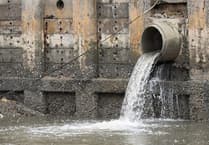“Up in the air…” (Cambrian News, 3 September) gave a balanced view on the future of the Welsh Air Ambulance Service. Just a few days after it was published, the issues became all too real for members of my family. Driving on a remote, but main road in Eryri National Park, they were one of the first cars at an incident. As a retired Anaesthetist, my wife was able to assist.
Getting a 999 call out was critical, but there was no mobile phone signal. Without that, it was also difficult to pinpoint the location; no sat nav or What Three Words. Luckily a young soldier was on hand, who could use an old fashioned map. Someone drove to find a signal and put the emergency call through, giving an OS grid reference.
The paramedic teams arrived as quickly as they could, followed by an Air Ambulance. By chance a second Anaesthetist was passing by too, and many others assisted having had some training in CPR. There are lots of good people around!
It all goes to show how challenging it is to deliver medical care in our beautiful but often remote West Wales. And the interesting thing here is that one of the critical “rate limiting factors” wasn’t the availability of the paramedics or air ambulance, but the lack of mobile phone connectivity.
It is hard to remember how we lived without our mobile phones. Like them or loathe them they are an essential part of our lives. In turn, the basic infrastructure that allows connectivity can have a critical impact on emergency medical care. If someone suggests multiple new masts to overcome that problem, will we agree or object? No one wants the beautiful views to be spoilt, until perhaps it is them needing urgent care! If our road infrastructure had been modernised, things would be very different.
The arguments over where our Air Ambulance services are located mirrors the recently raised issue of Stroke Services at Bronglais (world class and absolutely essential). It is easy to dismiss change as “cuts”, but in truth the arguments are more nuanced. If the helicopters aren’t serviceable, then there is no air ambulance service. So provision of engineers, delivery of spares etc may not be glamorous, but it is critical.
The figures suggest that for about 25 per cent of days, the Air Ambulance service at Caernarfon and Welshpool combined had no patient contact. That’s is an issue for a very expensive service and can’t be dismissed. But equally we are talking about time critical care. Getting this right so that we do the most good for the most people is not easy.
This issue highlights the slightly unique difficulty of delivering good healthcare in rural Wales. In truth, the permanent population of Aberystwyth doesn’t justify a District General Hospital, but it’s loss would be devastating for a huge area. We cannot have a “hospital desert” from the M4 corridor to Bangor and across to Offa’s Dyke. Likewise Pembrokeshire can’t be left out on a limb either.
I don’t want to see a lot of time and money wasted on another NHS reorganisation, but things do need to evolve. Perhaps some of the Health Authority boundaries need to be changed so that we can really focus on rural provision. For example Llanelli is close to and well connected to Swansea.
We can all see how infrastructure is critical. But to attract ambitious young medics, nurses, other clinical staff and administrators we also need good places to live and work, and a great educational system. Some of these key staff will come from abroad. They will be ambitious for their children. They will like a multilingual school environment, but an “English Not” could be unattractive.
What we really need is political leaders in Wales who can get their heads round just how complicated rural healthcare delivery is, and be willing to do some hard thinking.





Comments
This article has no comments yet. Be the first to leave a comment.